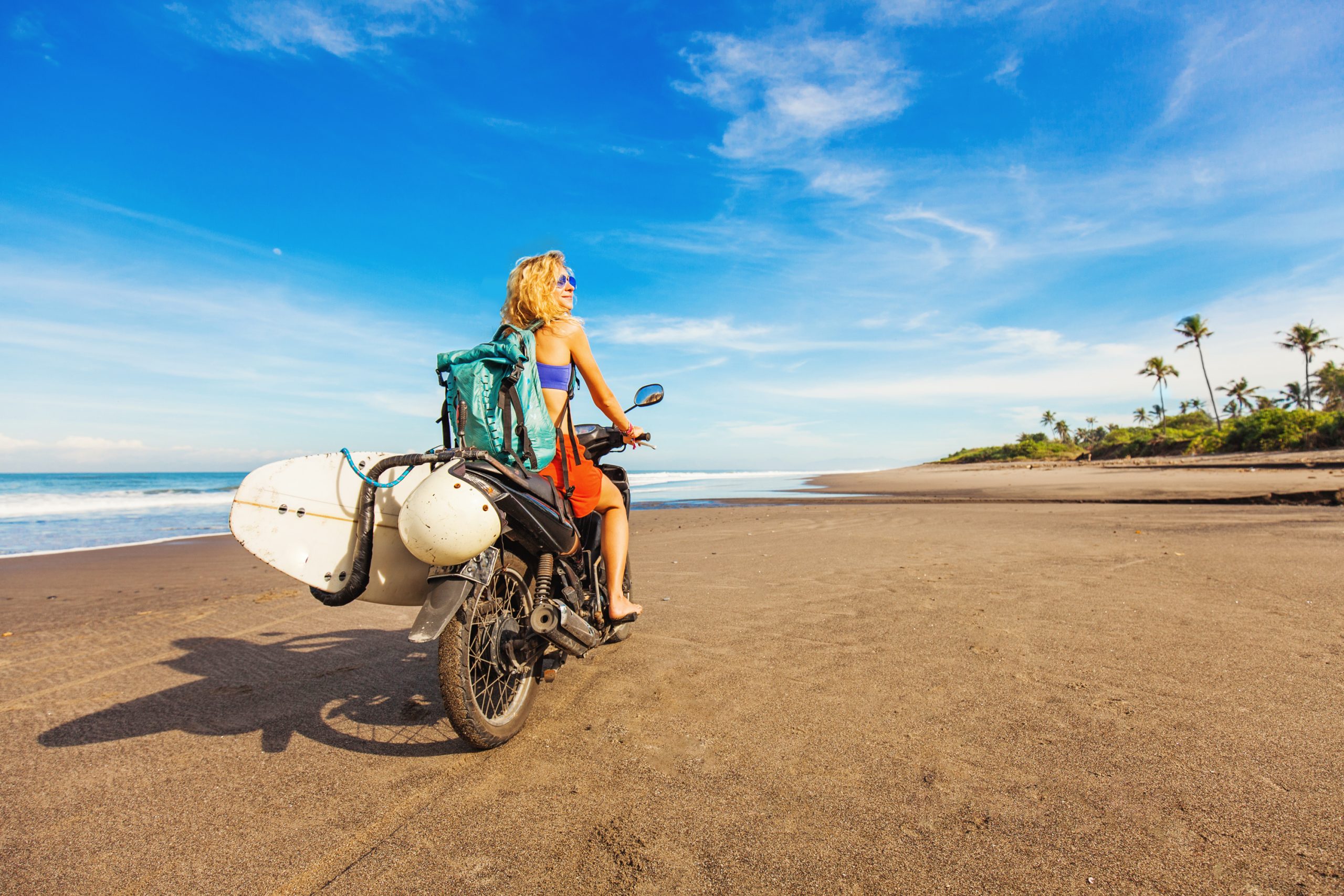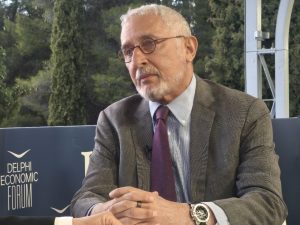When Peter Cox wrapped up his career as a pediatric critical-care doctor at age 65, he celebrated by signing up for the Tour d’ Afrique, a transcontinental bike trip with TDA Global Cycling. The roughly 5,600-mile route from Cairo to Cape Town spans 10 countries over 74 days of riding with just 28 rest days. Riders average 74 miles a day and spend only 10 nights in hotels. They camp the rest of the journey.
Cox wasn’t the oldest participant. The group had five riders over 70.
Outfitters specializing in adventure travel say the average age of their customers has ticked upward since Covid, according to a survey by travel research company Skift. At TDA, for example, the average client age currently is 62, compared with 57 prepandemic. And some 6% of its clients last year were over 75; before the pandemic, the percentage never exceeded 1%, the company says.
Adventure South NZ, a New Zealand-based outfitter, says the average age of its hiking and biking guests was 55 during the 10 years before the pandemic. It jumped to 65 directly after.
A U.S.-based operator focusing on trips for women, Adventures in Good Company, says its average guest age rose to 62 in 2023, compared with 58 prepandemic, and on many of its most-challenging trips, ages skewed even higher. Last year a 73-year-old completed a nine-day slackpacking trip along the Appalachian Trail in Georgia that averaged 7 to 16 miles a day, and an 80-year-old woman completed a nine-day trekking tour of Mont Blanc in France.
About 4.1 million Americans will reach 65 years old this year . “Sixty is the new 40,” says Shannon Stowell , president of the Adventure Travel Trade Association. “My dad stopped being active at 50.… People are living longer, healthier lives and are more active than ever.”
Intensity with comfort
Adventure travel doesn’t have to be as intense as it once was. Stowell says it has gained popularity with an older demographic in part because there are more comforts available, such as lodges with good food and guides who will transfer your gear. “Trekking to Machu Picchu or Everest Base Camp used to be so much more hard-core,” he says. “Better gear and more professionalism in guiding have made these adventures more accessible.”
Also, clients in the 55-plus crowd have traveled more than their parents and grandparents did, Stowell says. “They’ve done Rome and Paris. Now they want to go deeper to places like Mongolia,” he says.
Cox, who is now 70 and lives in Toronto, rode 2,547 miles from Bangkok to Ho Chi Minh City last year. This spring, his wife, 60, will join him on a 35-day, 1,637-mile bike expedition in Morocco. And in 2025, he plans to pedal 3,295 miles in the Himalayas from Srinagar, India, to Kathmandu, Nepal.
“I’ve never been on a cruise or to an all-inclusive resort,” he says. “The nice part of cycling is you’re moving at a speed that allows you to interact physically and emotionally with the environment.”
On long rides, Cox experiences discomfort in his shoulders and hips, but he says regular stretching has kept most aches at bay.
Rita Tellerman of New York City celebrated her 70th birthday in 2019 by cycling 1,885 miles through Madagascar with TDA Global Cycling. The trip featured 31 days of riding, nine rest days and a mix of hotel stays and camping.
“It ticked all of the areas that took me out of my comfort zone,” she says. “It was my first trip to a Third World country. I had no clue about camping equipment. And I’d never ridden a gravel bike.” The retired public-health nutritionist started cycling at age 50 and says her speed isn’t what it once was. “It pisses me off when I can’t keep up with the 50-and 60-year-olds,” she says.
Time and money
Such trips require significant time and money, two assets that many older people tend to have at their disposal. Monika Sundem , chief executive of trip planner Adventure Life, says her company’s trips, which average eight to 10 days, cost $600 to $800 a day per person. Her customers in the post-65 range, meanwhile, have gone from 23.5% in 2019 to 35% last year, and they are booking such trips as treks in Patagonia, mountain biking in Ecuador and climbing in the Alaskan backcountry.
Todd Rutledge , owner of expedition specialist Mountain Trip, says 60-plus customers make up 19% of clients on his Alaska Range itineraries. “A lot of people tell us they didn’t want to go away when their kids were at home,” he says.
“Our trips are a hefty investment,” says Rutledge, whose multiweek to two-months-long expeditions typically cost $10,000 to $60,000. Most require a high level of fitness, too. “People age 65 and older statistically are more likely to experience some form of altitude sickness,” he says. “We’re not physiologists or trainers so in 2018 we partnered with a company to design personalized training programs for guests—and most, particularly our older guests, take advantage.”
Deb Shucka, 72, of Battle Ground, Wash., walks and hikes regularly to maintain her fitness for hiking vacations. She celebrated her 70th birthday trekking el Camino de Costa Rica, a roughly 175-mile cross-country trail with a peak elevation of more than 7,600 feet.
“At one point our guide told us, ‘Every morning starts with breakfast and a hill,’ and he wasn’t joking,” she says. “I had to stop a bunch on the hills but I never felt impaired,” she says. Guides transferred bags, which she says made the 16-day trip more appealing. Along the way she slept in tents, cabins and on the floor of a village community center.
Last year, Shucka completed the Cape Camino, a roughly 400-mile route in South Africa, and she is hoping to trek in Ireland this fall. “When I retired at 63 it dawned on me I have to do these things now even if my husband doesn’t love to travel,” she says. “I’ve fallen in love with traveling by myself .”
Surf’s up
Betsy Cuthberton, 65, an accountant in Vail, Colo., and her retired husband, Mike Cuthberton, 66, recently took a vacation in Costa Rica so they could learn to surf. “We aren’t sit-on-the-beach people,” the wife says. “We do TRX classes and yoga a few times a week so we’re still physically capable of trying anything.” The couple, who are devoted skiers, booked a weeklong stay with Surf Synergy, a surf camp in Jaco that incorporates training, yoga and massages into the programming.
Surf Synergy co-founder Marcel Oliveira says he has seen an uptick in 65-plus guests wanting to surf for the first time. He assigns each guest two coaches so they always have someone with them in the water, whether taking off on a wave or getting out of the water. Betsy Cuthberton stood up on her first wave, and her husband was up and riding by the end of the first day.
“Not once did anyone say, ‘You’re too old,’ ” she says. “I believe staying young is embracing a mindset where you’re always learning.”
Jen Murphy is a writer in Boulder, Colo., and Maui. She can be reached at reports@wsj.com .
Corrections & Amplifications undefined The el Camino de Costa Rica cross-country trail has a peak elevation of more than 7,600 feet. An earlier version of this article incorrectly said 19,000 feet, which is the cumulative elevation—the sum of all upward walking during a hike. (Corrected on March 27)



